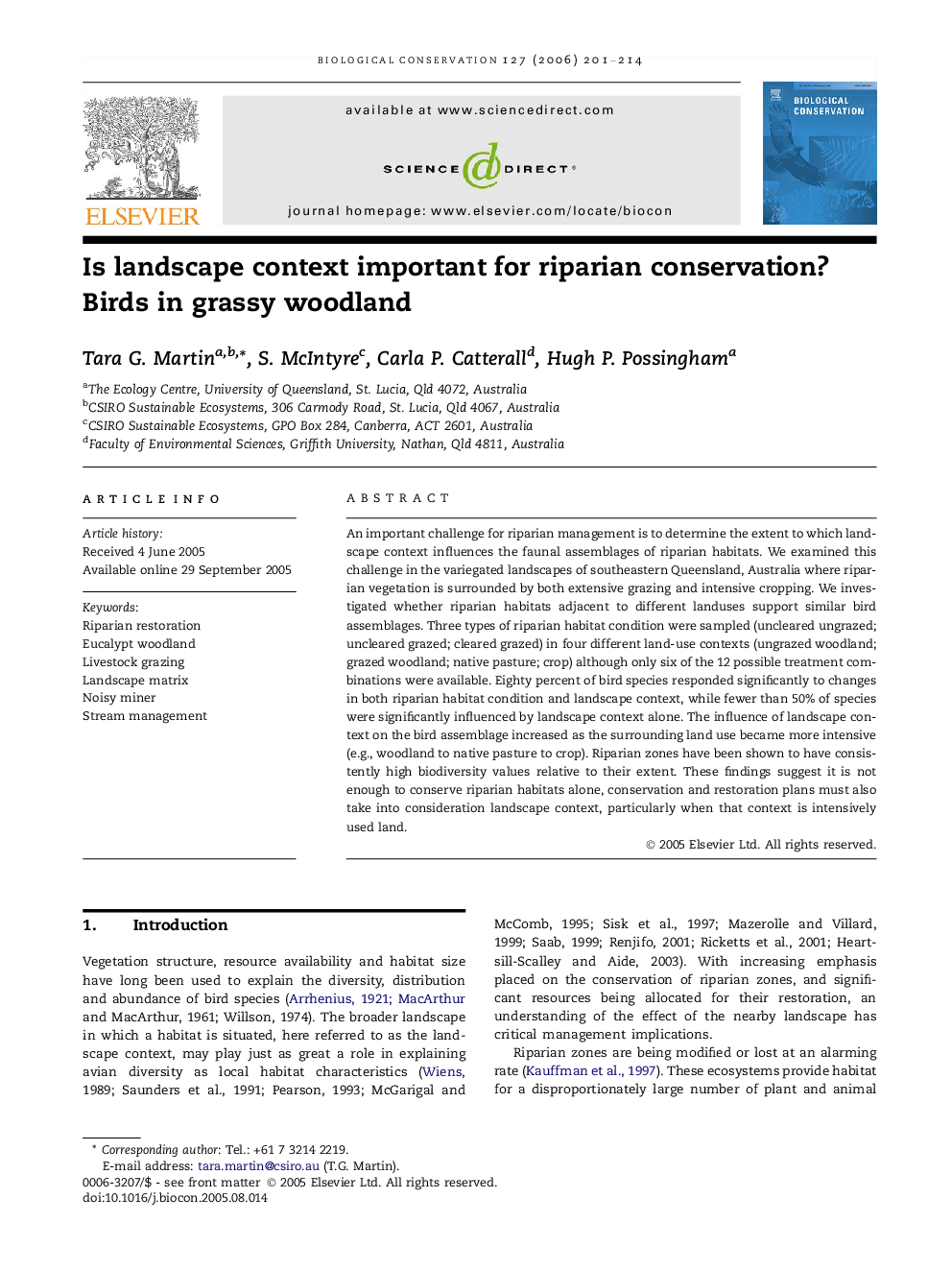| Article ID | Journal | Published Year | Pages | File Type |
|---|---|---|---|---|
| 4387891 | Biological Conservation | 2006 | 14 Pages |
An important challenge for riparian management is to determine the extent to which landscape context influences the faunal assemblages of riparian habitats. We examined this challenge in the variegated landscapes of southeastern Queensland, Australia where riparian vegetation is surrounded by both extensive grazing and intensive cropping. We investigated whether riparian habitats adjacent to different landuses support similar bird assemblages. Three types of riparian habitat condition were sampled (uncleared ungrazed; uncleared grazed; cleared grazed) in four different land-use contexts (ungrazed woodland; grazed woodland; native pasture; crop) although only six of the 12 possible treatment combinations were available. Eighty percent of bird species responded significantly to changes in both riparian habitat condition and landscape context, while fewer than 50% of species were significantly influenced by landscape context alone. The influence of landscape context on the bird assemblage increased as the surrounding land use became more intensive (e.g., woodland to native pasture to crop). Riparian zones have been shown to have consistently high biodiversity values relative to their extent. These findings suggest it is not enough to conserve riparian habitats alone, conservation and restoration plans must also take into consideration landscape context, particularly when that context is intensively used land.
